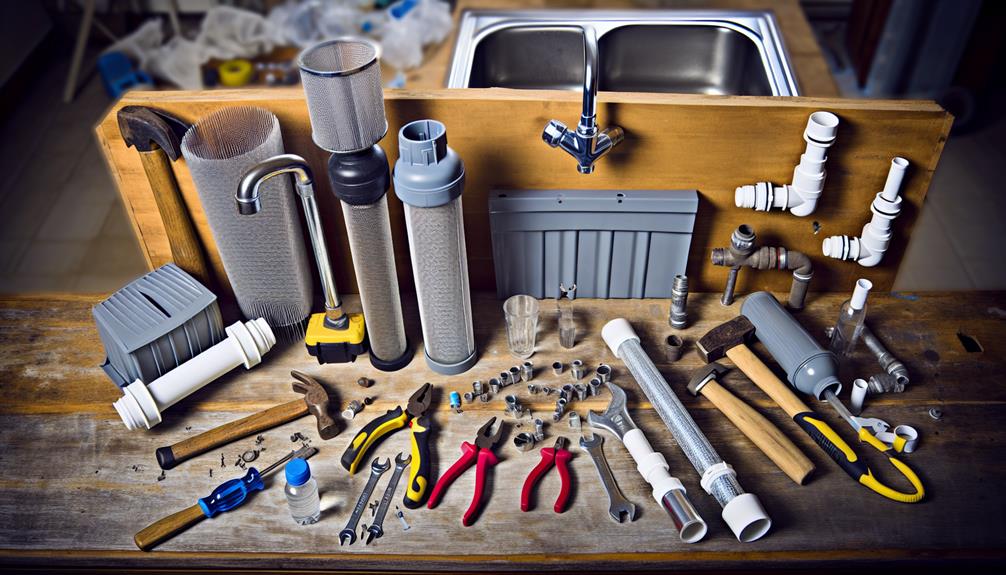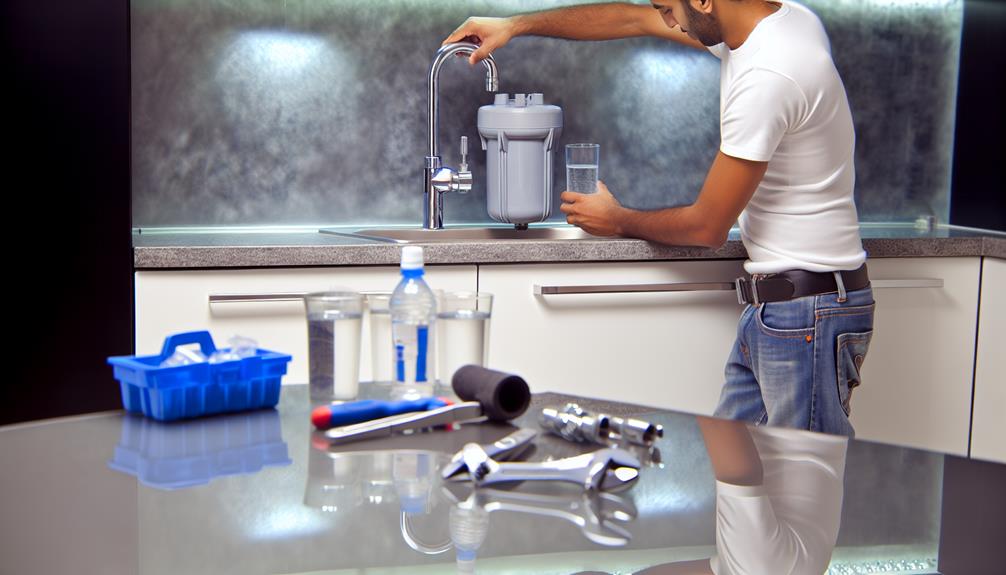Just as a gardener prunes trees to ensure their health and productivity, you must tend to your whole house water filter with the same level of care to guarantee the purity of your water.
You've invested in this system to protect your home from contaminants, but its effectiveness is only as good as the maintenance it receives. Begin by selecting the right filter; one that matches your home's specific needs and water quality demands.
Then, make regular inspections a part of your routine, checking for wear or any signs of a performance drop-off. Remember, parts aren't meant to last forever, and timely replacement is crucial to prevent any lapses in filtration.
As you establish systematic cleaning protocols and monitor water pressure, don't overlook the value of professional maintenance checks. These steps can seem daunting, but understanding their significance and how to execute them properly is the key to ensuring that every drop of water flowing through your home remains clean and safe.
Stick around, and you'll uncover the nuances of each step that can make all the difference in the longevity and efficiency of your system.
Selecting the Right Filter
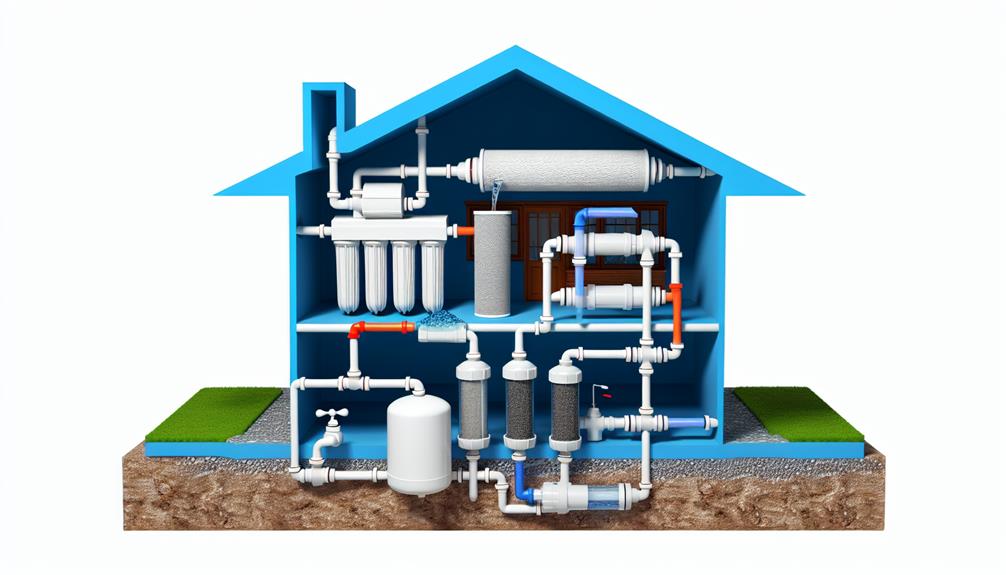
When choosing the right whole house filter for your home, consider the specific contaminants you need to target and the filter's compatibility with your plumbing system. You'll need to identify the particulate matter, chemicals, or microorganisms prevalent in your water supply. This determination is critical as it influences the type of filter media required—be it activated carbon, reverse osmosis membranes, or sediment filters.
Moreover, filter compatibility is paramount. You must ensure that the unit you select can integrate seamlessly with your existing plumbing. The filter's inlet and outlet size should match your pipes to avoid unnecessary modifications, which could lead to installation challenges. Flow rate is another compatibility consideration; the filter must be able to handle the gallons per minute that your household demands without causing a drop in water pressure.
Evaluate the installation challenges you might face, such as the need for additional fittings, potential changes to your piping to accommodate the filter, or the requirement for backwash capabilities. If you're not confident in your technical skills, hiring a professional plumber for the installation may be wise. They can address compatibility issues and ensure the system functions optimally from the start.
Regular Filter Inspection
After selecting and installing the appropriate whole house water filter, it's essential to regularly inspect it to maintain water quality and prolong the system's lifespan. Consistent inspections can prevent costly repairs and ensure that you're not caught off-guard by a sudden decrease in water quality.
To carry out a thorough inspection, you'll need to be familiar with a few key inspection tools and procedures designed to monitor and maintain your filter's performance. Here's a list of what you should focus on:
- Visual Check: Inspect the filter housing for any cracks or damage that could compromise its integrity.
- Pressure Gauges: Monitor the pressure before and after the filter to check for significant drops, which could indicate clogging or other issues.
- Cartridge Examination: Review the filter cartridge for signs of sediment buildup or contaminants, which can affect filter lifespan.
- Seals and O-rings: Check these components for wear and tear to prevent leaks and maintain an effective seal.
Timely Filter Replacement
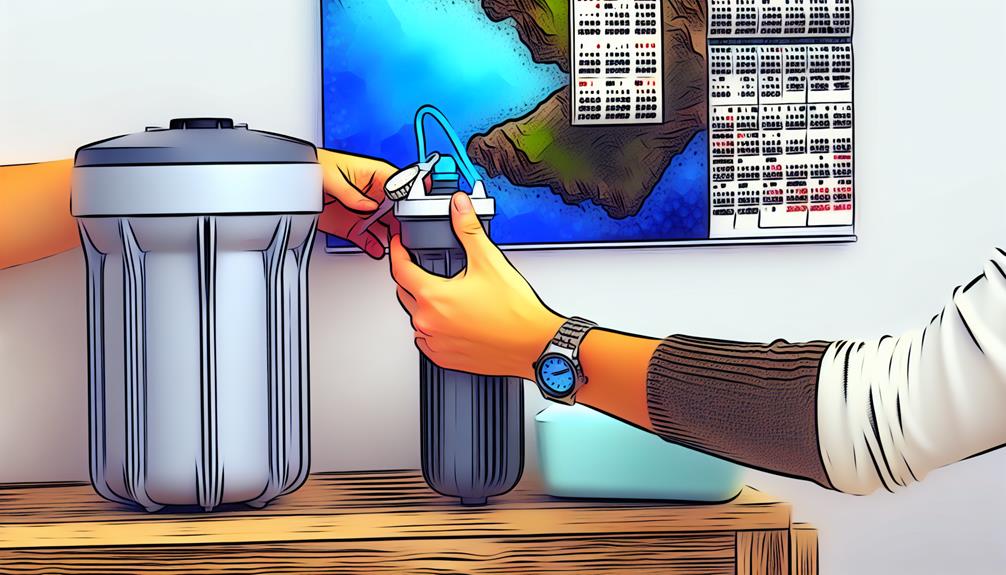
To ensure optimal water quality and system efficiency, you must replace your whole house filter cartridges at manufacturer-recommended intervals. Filter lifespan varies depending on several factors, including water usage and sediment levels. It's imperative to be aware of replacement indicators, such as decreased water pressure or an unpleasant taste or odor in your water, which signal that your filter's capacity to purify is compromised.
Below is a table to evoke the importance of timely filter replacement:
| Filter Condition | Emotion Evoked | Action Required |
|---|---|---|
| Freshly Replaced | Satisfaction | Maintain System |
| Halfway Used | Awareness | Monitor Quality |
| Near End of Life | Concern | Plan Replacement |
| Expired | Urgency | Replace Now |
| Ignored | Negligence | Risk Contamination |
Adhering to a strict schedule for filter replacement is not just about maintaining water quality; it's also about protecting your household from potential water-borne contaminants. Remember, the cost of neglecting filter maintenance far exceeds the price of a new cartridge. Be proactive in monitoring your filter's condition, and don't hesitate to replace it even if it's slightly before the predicted lifespan—if your water quality demands it.
Systematic Cleaning Protocols
You must adhere to a strict schedule for filter maintenance to ensure optimal performance of your whole house system.
Employ effective cleaning techniques that remove contaminants without damaging the filter media.
These protocols are crucial for maintaining water quality and prolonging the lifespan of your filtration unit.
Scheduled Filter Maintenance
Establishing a regular schedule for filter maintenance ensures your whole house filtration system operates at peak efficiency. To prolong your filter's lifespan and maintain a clear maintenance record, adhere to these essential steps:
- Inspect Filters Monthly: Check for buildup and wear, which can impede performance.
- Clean or Replace Quarterly: Depending on your water quality, clean the filters or replace them to prevent clogs.
- Log Maintenance Activity: Keep a detailed record of each maintenance task to track filter health over time.
- Consult Manufacturer Guidelines: Reference your system's manual for specific maintenance recommendations.
Effective Cleaning Techniques
Adopting systematic cleaning protocols for your whole house filter is crucial in maintaining its effectiveness and longevity. Begin by examining the manufacturer's guidelines to ensure compatibility with specific filter materials. Use designated cleaning agents that are effective yet gentle enough to prevent damage to delicate filter components.
Proceed by dismantling the filter unit, if necessary. Thoroughly rinse removable elements with clean, cool water to dislodge debris. For non-washable parts, employ a soft brush or cloth to remove dirt. Apply the recommended cleaning agent according to the instructions, ensuring even coverage.
Rinse all components again to eliminate any residual cleaning agent. Before reassembling, ensure all parts are completely dry to avert mold growth.
Regular adherence to these meticulous cleaning techniques will extend the life of your filter system.
Monitoring Water Pressure
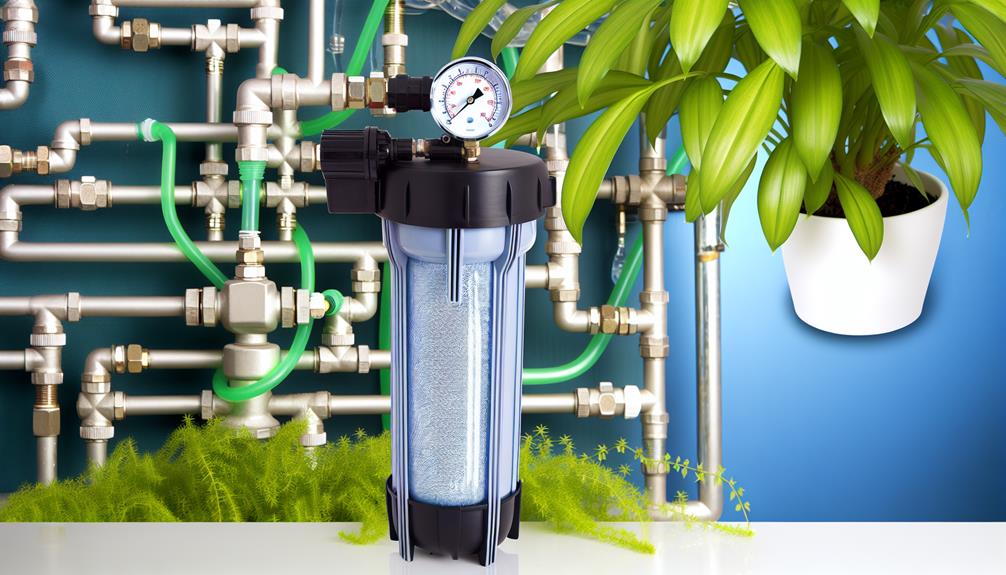
As you maintain your whole house filter, it's crucial to regularly check the water pressure to ensure optimal system performance.
Be alert for any signs of pressure drop, which could indicate clogs or other issues within your filtration system.
Implementing preventative maintenance tips can help you avoid disruptions and prolong the life of your filter.
Check Pressure Regularly
Regularly monitoring your home's water pressure is crucial to maintaining the efficiency and longevity of your whole house filter system. A pressure gauge is an essential tool for this task, providing accurate readings that can help you detect irregularities, which might indicate leaks or other issues in your plumbing.
Here's what you should keep an eye on:
- Pressure Gauge Readings: Ensure they're within the normal range for your home.
- Sudden Pressure Drops: These can signify potential leaks or blockages.
- Regular Leak Detection Checks: Prevent major issues by catching leaks early.
- Maintenance Schedule: Stick to a routine to avoid overlooking pressure changes.
Identify Pressure Drop Causes
While you monitor your home's water pressure, it's essential to pinpoint the reasons behind any unexpected drops to maintain your whole house filter system effectively.
| Cause | Symptom | Solution |
|---|---|---|
| Sediment Buildup | Slow flow rate, clogging | Regular filter replacement |
| Pipe Corrosion | Discolored water, leaks | Inspect pipes, replace if necessary |
| Faulty Pressure Regulator | Sudden pressure changes | Check and adjust or replace regulator |
Sediment buildup can heavily impact your system's efficiency. Regularly replacing the filters is key to preventing this. Likewise, pipe corrosion can lead to leaks and discolored water, which suggests a need for pipe inspection and potential replacement. Also, a faulty pressure regulator can cause erratic pressure changes; checking and adjusting or replacing the regulator will stabilize the water pressure. Always address these issues promptly to ensure your whole house filter operates at peak performance.
Preventative Maintenance Tips
To safeguard your whole house filter system, it's crucial to implement a routine for monitoring water pressure and identify any irregularities early on. This practice not only helps extend the filter lifespan but also minimizes maintenance costs.
Keep in mind these steps:
- Regularly check your water pressure gauge: Ensure it's within the manufacturer's recommended range.
- Inspect for leaks: Sudden drops in pressure could indicate leaks that require immediate attention.
- Monitor for gradual pressure changes: These can signal filter clogging or sediment buildup.
- Schedule annual professional inspections: Experts can spot issues you might miss and prevent future problems.
Professional Maintenance Checks
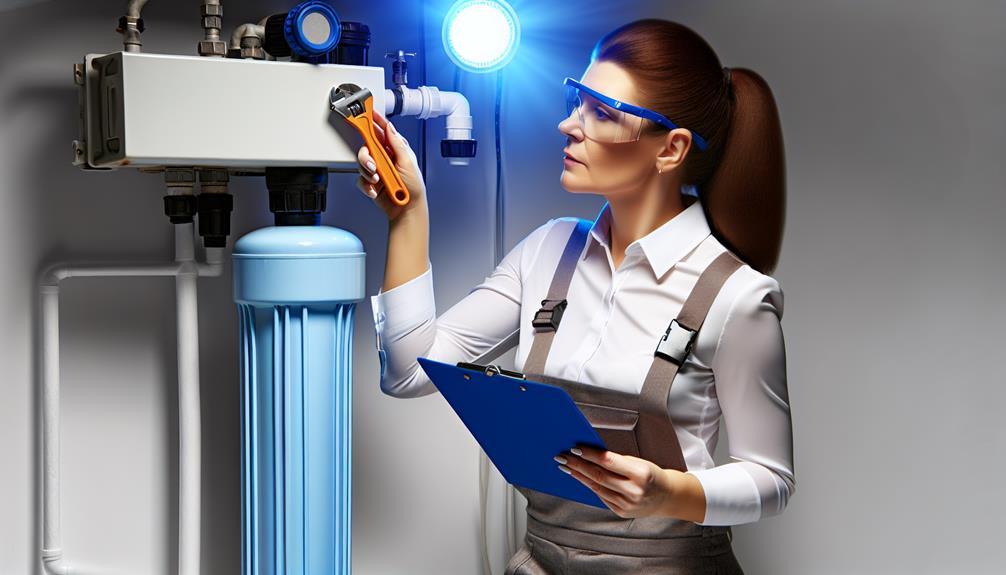
Ensuring your whole house filter operates at peak efficiency is crucial, and this can be achieved through annual maintenance checks performed by a certified technician. These checks are important for upholding filter warranties and can be facilitated through service contracts that offer scheduled inspections and tune-ups. It's essential to understand what's covered under your warranty and the terms of any service contract you have in place.
During a professional maintenance visit, the technician will typically examine the filter media, check the structural integrity of the housing, and ensure that valves and bypass systems function correctly. They'll also verify that the pressure drop across the filter is within acceptable limits, which is essential for maintaining water flow and filtration quality.
The technician's expertise allows them to identify wear and potential issues before they lead to failures, thus extending the lifespan of your system. They might also update you on advancements in filtration technology that could enhance your home's water quality or improve efficiency.
Conclusion
In conclusion, you've got to stay on top of your whole house filter maintenance to ensure clean, safe water. Choose the correct filter, inspect it regularly, and don't delay replacing it when needed.
Stick to a cleaning schedule, keep an eye on the water pressure, and enlist a pro for periodic checks. By following these steps diligently, you'll maintain your system's efficiency and prolong its lifespan, safeguarding your home's water quality.
